What are the grape trellis and how to install them?
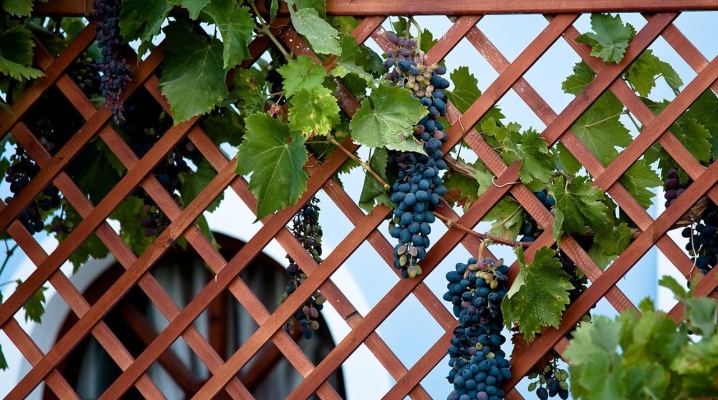
In order for the vines to grow quickly and develop well, it is very important to correctly tie the plants - this contributes to the correct formation of the vine and avoids its sagging. The use of trellises ensures full air circulation between individual branches, and this has the most positive effect on the condition of the plant. To tie the vines, it is not at all necessary to buy special supports, they can always be made with your own hands from improvised means.
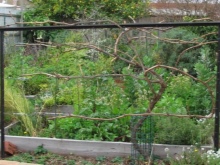
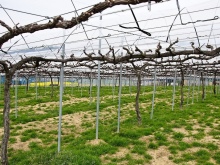
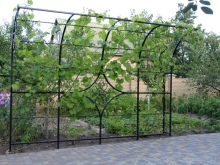
Description and purpose
To obtain a rich grape harvest, young bushes must be tied to supports. The advantages of growing vines vertically on trellises are obvious.
- The correct formation of the vine from the very first years of life and the further maintenance of the required shape contributes to the full growth and development of the fruit bush.
- Due to the even vertical placement on the trellis, the vine shoots do not shade each other, and each branch, leaves and fruits receive a sufficient amount of sunlight. Full lighting contributes to the acceleration of metabolic processes and, as a result, to obtain a large yield of large juicy berries with exceptional taste characteristics.
- The inflorescences, distributed over the trellises, are open to insects, so pollination is easier and faster.
- Timely tying of the vines provides the bushes with full ventilation - this is a good prevention of fungal infections.
- Grape bushes grown on trellis have good immunity. They are resistant to frost, precipitation and other adverse external influences.
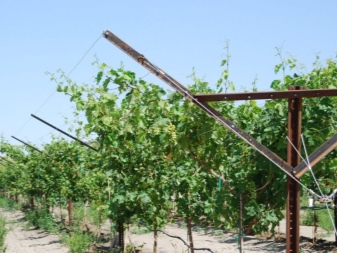

Species overview
There are many varieties of tapestries. Let's take a closer look at the most demanded design options.
One-plane
Grape bushes are planted in straight parallel rows, so the trellises are placed on one edge from the plants. A single-plane trellis is a simple design in which the pillars are installed in one row, and a trellis wire is drawn between them, always in a single plane.
When installing such trellises, it is important that the supports are located at a short distance from each other, the distance from the bush to the support should be 30-35 cm. This arrangement facilitates the care of the grapes and the subsequent harvest.
Simple one-plane tapestries are quite often used by our compatriots in their dachas.
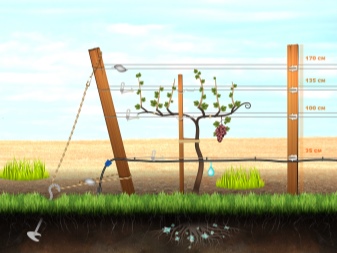
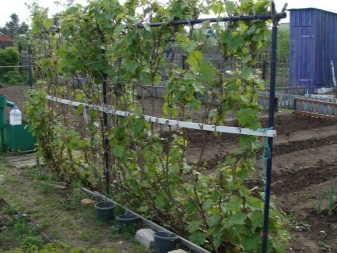
Two-plane
In a two-plane construction, the vine, together with young shoots, is located on two planes of stretched diameters. This type of support greatly simplifies the care of developing bushes, and due to the fact that the growth of young shoots increases, it contributes to a significant increase in yield. Such designs have become widespread in the cultivation of vigorous grape varieties.
However, it is important to keep in mind that the two-plane trellis is used exclusively for garter vines growing from north to south. If the orientation of the plants is different, one row of grapes will be strongly darkened by the other. Such trellises are placed at a distance of 50-80 cm.
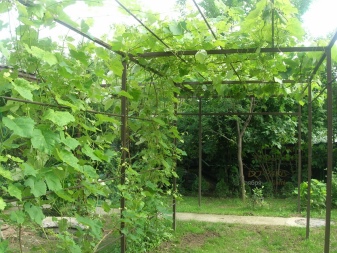
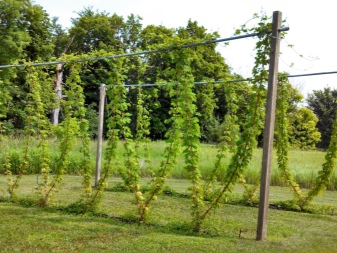
Other
U-shaped designs are very popular. Such supports are placed on both sides of the bushes and a wire is pulled on each side. Two supports are placed at an equal distance from the plants and at the same distance between themselves - the distance should correspond to 50-60 cm.
If the distance is less, it will complicate the treatment of bushes with fertilizers and chemicals.
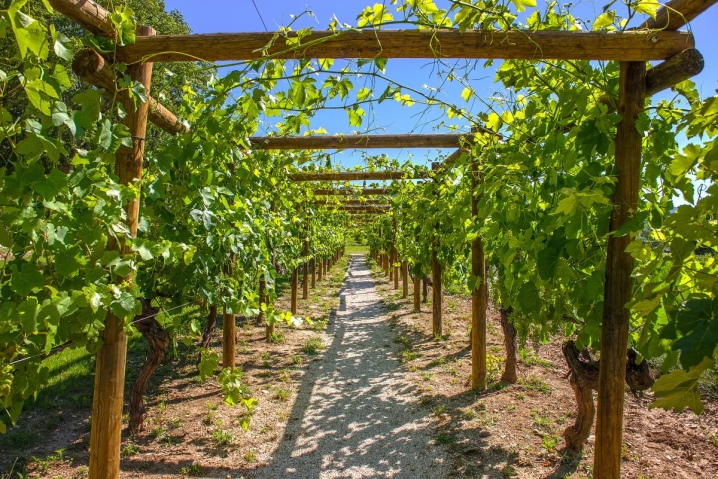
V- and Y-shaped designs are slightly less common. Such trellises involve the installation of a pair of rows of supports with a slight slope and with the presence of wire. In this case, the angle does not have any effect on the parameters of the illumination of leaves and branches by the sun's rays.
It is imperative that the posts are connected to each other with jumpers to prevent them from falling under the weight of the fruit. Due to the optimal slope of the structure, the grape bunches hang freely, this has the most positive effect on the growth rate and development of the plant. The dimensions of such a support are selected, guided by the individual preferences of the grower.
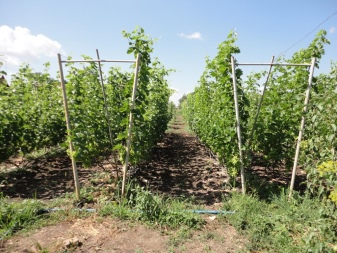

Noteworthy are the L-shaped structures, better known as pergolas. With this design, the planes with the wire are placed horizontally, young green shoots grow along them. The pergola has a height of 2-2.5 m, while the shoots of plants are placed parallel to each other.
When growing grapes on a pergola, gardeners note the rapid growth of vines and an increase in crop yields.s - this is due to the fact that the leaves are illuminated by the rays of the sun throughout the day. The formation of a culture on an L-shaped support ensures full air circulation and thereby minimizes the risk of infection by fungi and viruses.
The only drawback of the design is its height, since in this case it is difficult to care for the plant.
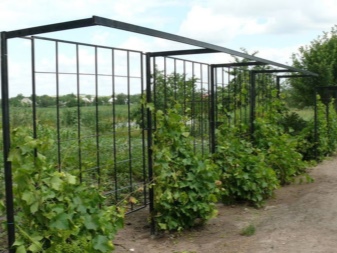
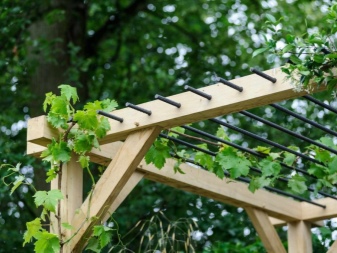
The pergola is often installed in small areas, since it simultaneously solves two problems - it acts as a supporting structure for grapes and at the same time decorates the local area. In a short period of time, the vine on the trellis reaches the top of the trellis and creates a beautiful landscape. By the way, the pergola can be used for wild grapes for arranging a recreation area - you just need to arrange a place under the vine with benches, put a small table or hang a hammock.
Some growers prefer T-shaped trellises.

Materials (edit)
Hand-made grape trellis are a simple structure of individual racks with cables or wire stretched across. As support legs you can use:
- reinforced concrete pillars;
- metal or plastic pipes;
- bars made of wood;
- asbestos pipes;
- channel.
Wooden racks look very nice and, in terms of aesthetic characteristics, are significantly superior to all other devices. However, they are less practical, because after 5-6 years, the parts of the trellis buried in the ground begin to rot.
To extend the life of such a structure, it is worth giving preference to products made of oak, chestnut or acacia.
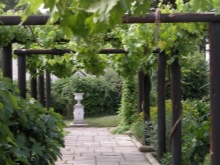
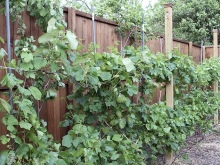

That section of the trellis column, which will be in the ground, should first be kept in a 5% solution of copper sulfate for 3-5 days, and then lubricated with kerosene or liquid resin. The upper areas are also exposed to the adverse effects of atmospheric precipitation, insect pests and rodents - they must be treated with fungicidal impregnations annually.
Forged trellis for grapes are considered a more practical solution. Usually they are made of a metal channel or pipes with a diameter of at least 6 cm. Please note that the maximum load will fall on the extreme supports - they must be the most durable, it is better to take pipes of large diameter for them. The intermediate posts may be slightly narrower.
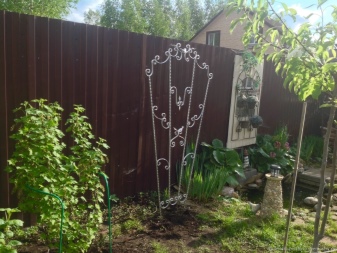
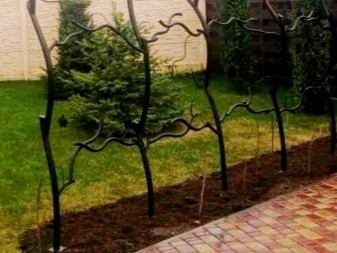
For arched trellises, the best solution would be reinforcement or a metal rod welded to the support pillars. This material bends well, so that the trellis can be rounded while maintaining optimal structural strength and support rigidity.
For the transverse rows of the trellis, you can take a metal cable or aluminum wire 3-4 mm thick.
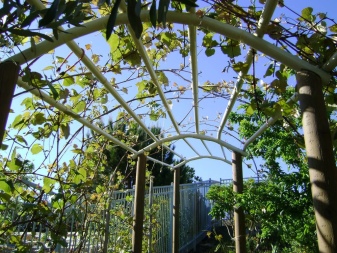
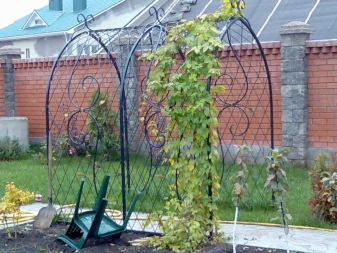
Dimensions (edit)
It is possible to calculate the optimal height of the trellis posts for the cultivation of grapes, taking into account the climatic characteristics of the region. In accordance with the standards, in central Russia, the height of the bushes reaches 2.5 m, so the buried part should be 50-70 cm, and the ground part - 200-250 cm. In the southern regions, grapes grow more actively, so there the height of the trellis above the ground level should be up to 350 cm.
In one row, supports are placed in increments of 2-2.5 m. It is important to take care of the preparation of additional stiffeners in advance, for this you can take metal corners or small pipes. The distance between the crossbars is usually 45-50 cm.

How to do it yourself?
In order to independently make trellises for grapes, you must first decide on the type of construction and study the drawings.
Let's take a closer look at the features of installing trellises from different materials - each option will harmoniously fit into the garden design and create a solid, durable support for growing grapes.
Trellis from a profile pipe
Even a beginner with no work experience can make such a two-lane trellis. You will need:
- shaped pipes - 8 pcs.;
- wire - 30-40 m;
- crossbars - 8 pcs.;
- pegs;
- cement and crushed stone.
The step-by-step instruction provides several sequential steps.
- First you need to dig holes at a distance of 70 cm. They are poured with a thick solution of cement and sprinkled with gravel.
- The pipes are installed slightly at an angle so that the bushes can withstand the weight load. The crossbars are fixed from above.
- For the installation of the crossbars, it is advisable to take a copper wire. To fix it on the trellis, it is necessary to make holes in the pipes with a drill. The first row of trellis wire is pulled at a height of half a meter from the ground, each subsequent row is 40-45 cm higher than the previous one.
The tapestries are ready. Such a support will serve faithfully for many years.

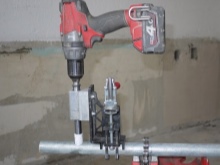

Trellis made of plastic pipes
Polypropylene pipes retain their integrity for several decades. It is a durable material. However, in order to give the pipes the required rigidity, it is recommended to additionally insert reinforcement inside. It is not difficult to make a trellis from a plastic pipe, this process includes several main stages:
- at a distance of 55-60 cm, planting holes are dug, 65 cm reinforcement is buried in each hole;
- plastic blanks are bent in the shape of an arch, taking into account a suitable bend radius;
- bent pipes are strung on metal fittings;
- to give the structure the necessary strength, transverse lintels are used;
- the optimal height of the plastic trellis for grapes is 2.5-3 m, the distance between the crossbars should be 45-60 cm.
Before installing metal pipes, it is imperative to perform anti-corrosion treatment of the supporting structures.

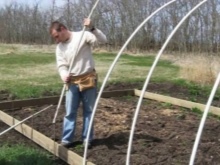
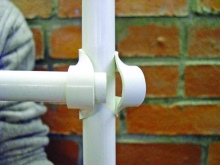
Wood trellis
In order to make a structure out of wood, it is necessary to prepare several wooden posts, a wire with a cross section of 4 cm, crossbeams and cement.
Step by step process.
- On the selected site for planting grape bushes, holes are dug with a depth of 80 cm with a distance of 40-50 cm.
- A layer of river sand is poured into each hole, and wooden posts are fixed in the depression. The base is cemented.
- The crossbeams are fixed in the upper and lower parts of the supports, they will support the trellis.
- Between them, holes are drilled in the posts at a distance of 40-45 cm and a metal wire is threaded. It is best to choose copper products, in which case the trellis will be not only practical, but also beautiful.

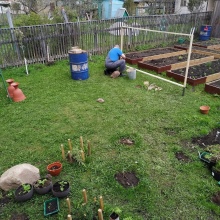
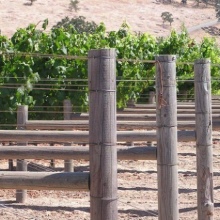
Tapestry for grapes from fittings
To make a strong metal wire trellis for a vineyard, you must perform the following steps:
- the lower part of the pillars is coated with a layer of bitumen and hammered into pre-prepared planting holes to a depth of 60-70 cm, while the distance between individual pillars should not exceed 1.7-2 m.
- at a distance of 45-55 cm from the surface of the earth, pull the wire of the lower row, each subsequent one should be 40-50 cm higher than the previous one.
Such a trellis is characterized by reliability and durability.

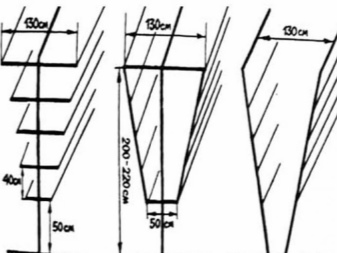
Where to install?
Decorative vine supports are classified as permanent structures. They cannot, if desired, be moved from place to place, therefore, the selection of a site for the installation of trellises should be taken carefully. The plot must meet the following requirements:
- be well lit by the sun's rays;
- the distance between individual rows of grape bushes should be in the range of 1.5-2 m.
Novice users can build trellis for maiden grapes near the fence to save space.
Supports should be placed in a north-south direction. In this case, in the morning the vine will be illuminated by the rays of the sun from the east, at lunchtime the maximum illumination will fall on the inner part of the green mass, and in the evening the sun will shine on the western part of the bush.
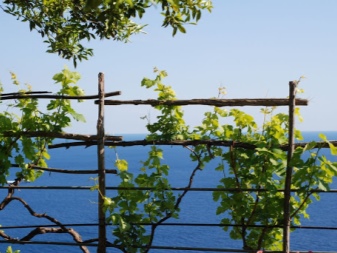
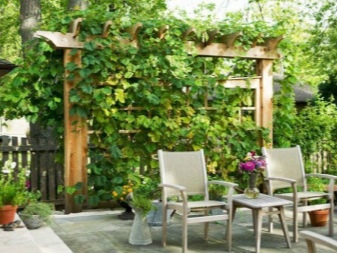
Growing grapes on trellises
The technique of tying grapes to the trellis depends on the planting scheme of the culture and the season in which you plan to carry out this work. So, the first garter of grapes to the trellis is carried out in early spring, when the young shoots of the plant are still too weak and require support. This should be done before the buds open. Tying on the branches too late can damage the plant.
The garter is carried out as follows:
- the elongated sleeves of the vine are fixed to the crossbars at an angle of 50-60 degrees;
- replacement shoots are tied to the lower wire;
- the vine is carefully wrapped around the crossbar and fixed with a soft twine or a piece of fabric;
- branches that cannot be fixed at the specified angle are tied up slightly tilted.
Important: Old bushes should be tied at right angles. You need to act carefully, since the branches of such plants are very fragile.
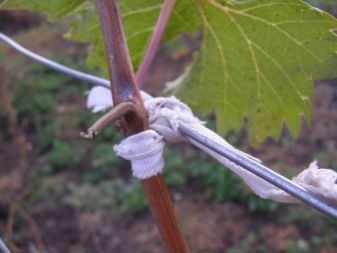
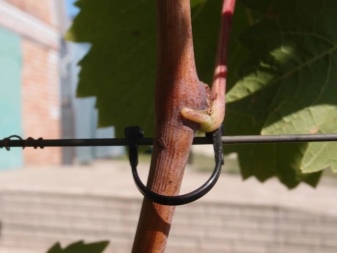
For the full formation of large bunches, the plant requires an abundance of useful trace elements and organic fertilizing. Therefore, after the tying procedure is completed, a small amount of nutritious feeding must be added under each bush, and then moistened abundantly.
The summer procedure is called the "green garter". It allows you to protect the bushes of grapes from rain and strong gusts of wind. At this time, the vine is tied up at a right angle - thus, only those bushes that have a high stem or a long sleeve are ordered. When the vine grows up, it will need to be tied up again to fix the regrown shoots. Keep in mind that during the summer season, shoot garter manipulations can be carried out no more than three times.
Fixing the vine with trellises allows for sufficient air circulation to the green shoots and the flow of sunlight. Such conditions of development contribute to obtaining a large harvest. Grape fruits grown on trellises are usually large, juicy and sweet in taste.
For the creation of a single-sheet trellis for grapes, see the video.













The comment was sent successfully.